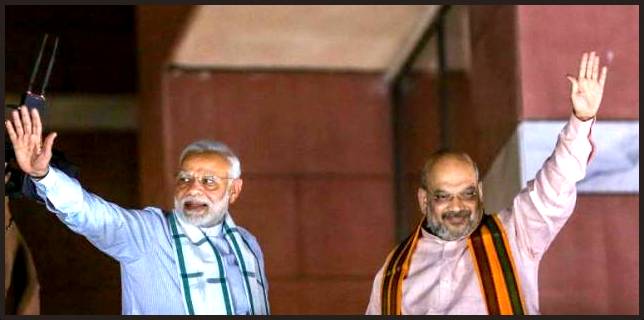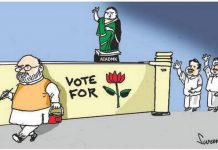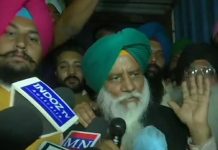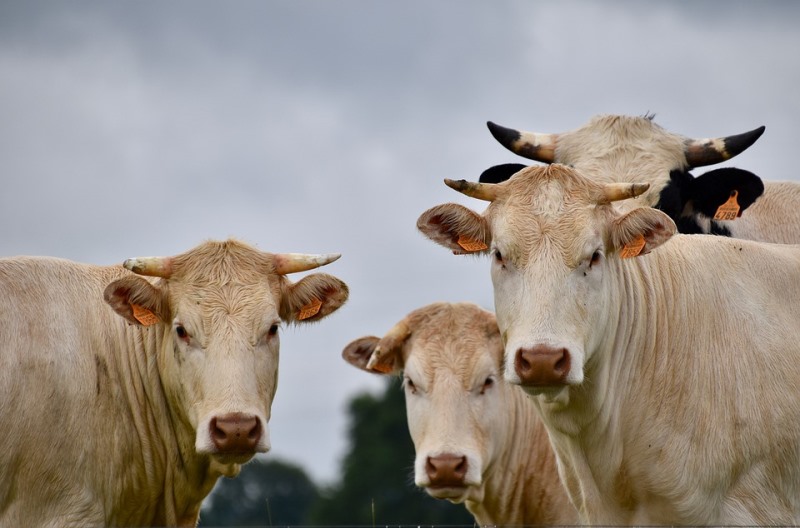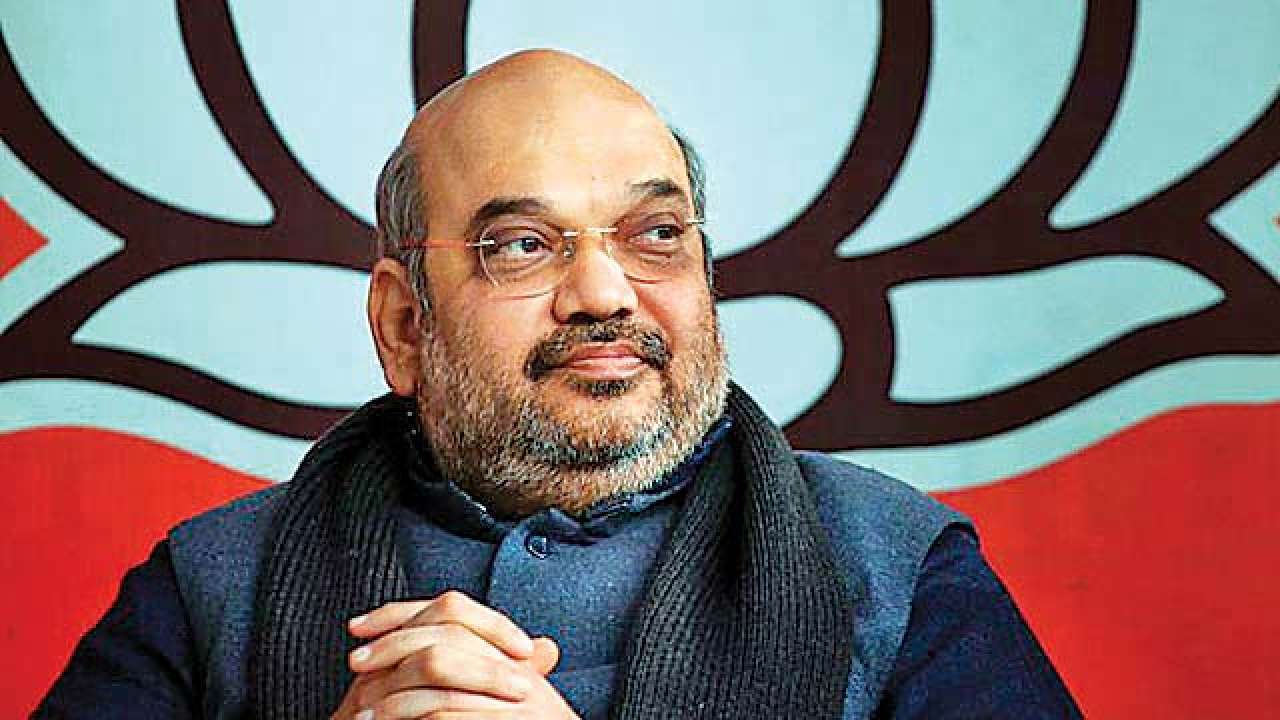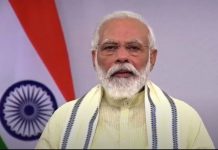POLITICS
The NDA government completes its four years and it is significant for people to analyze its trajectory. The author throws light on the governance delivered up till now.
Arvind Kumar Patel is an Assistant Professor of Political Science in Janki Devi Memorial College, University Of Delhi.
On May 26th, 2018 Narendra Modi led BJP/NDA government completed four years of its five year mandate to rule the country. In the run up to the 16th Lok Sabha poll in 2014, Mr. Narendra Modi led an electrifying yet hugely polarizing campaign ever since he was crowned as the BJP’s Prime Ministerial candidate a year before. A strong Prime Minister at the helm of affairs, less government-more governance, a fast growing economy with huge employment generation, bringing back black money (and to deposit 15 lakhs in every Indian’s bank account!) and most of all a decisive government. These were the ideals/promises that gave him the unprecedented and historic verdict especially in the context of the kind of electoral verdict India has produced since the dawn of the 3Ms – ‘Mandal, Mandir and Market’– in 1990s.

Ever since Mr. Modi’s coronation as the ‘Pradhan Sewak’ (first-servant) of Indian Republic; political pundits, academicians, media and concerned citizenry started believing that by winning the mandate through use of sam, dam, dand and bheda (negotiation, persuasion, punishment and divide and rule); he will govern decisively. Many asserted that before going for elections in 2019 he would have transformed India – socially, politically and above all economically – by establishing India in the coveted community of super-power nations. It becomes critical that an assessment of this government’s trajectory of governance along economic, social and political lines be undertaken.
Economy:
India is a diverse country. Diverse not only in its demography and cultural traditions but also in its demands and needs. While resources are limited and finite, expectations are limitless. The economic divisions and disparities among population are manifold. Traditional economics with a sole objective of GDP growth could not sustain in such a complex terrain of demand and supply. An economy focusing solely on growth paradigm is destined to fail in Indian scenario.
UPA-I (2004-09) succeeded because it struck a fine balance between growth and distribution. It demonstrated that harvest of growth could be translated in policy formulations and could be delivered to the last man in the queue. Apparently UPA government was rewarded by electorate to return to power for a second term in 2009. The biggest mistake of UPA-II (2009-14) was to rely heavily on distribution factor without taking care of growth of economy. Rampant corruption, crony capitalism and hollow promises added its distress of governability. The rise of the BJP as formidable alternative and Mr. Modi’s popularity wave battered the Congress party to limit the grand old party of India in 2014 Lok Sabha polls.
What is the economics of the NDA government? The four years of NDA government’s economic trajectory is an exact reverse of the UPA-II. The focus is on growth with a shameless neglect of distribution. It is apparent that economic trajectory is the penchant of ‘economic revival’ and celebrations of ‘world’s fastest growing economy’ in spite of the projection there is farmer distress, farmer suicide, severe drought, soaring prices of essential commodities, exceptional rise of petrol and diesel prices and huge cuts in social sector spending. The utter neglect of MGNREGA fund especially in the first year of the present dispensation could not be compensated by boasting of opening 10 crores bank accounts under ‘Jan Dhan Yojna’. How unfed stomachs with penniless bank accounts would ensure ‘financial inclusion’ is a question that must be asked to the financial managers of the NDA government.
Governance: Event Management
The history of four years of Modi government is the history of event management. Instead of concrete plans and procedures to take country forward, there is a conscious and continuous effort to either create new events or to manipulate older ones to garner media attention and to remain in the limelight all the time. New schemes have been rolled out or older are diluted to create self-satisfying occasions to show that Modi government is at work. For this purpose NDA government in the past four years has changed names of several existing schemes – like ‘Nirmal Bharat’ to ‘Swachh Bharat Abhiyan’, ‘Rajiv Gandhi Shilpi Swasthya Bima Yojna’ to ‘Aam Aadmi Bima Yojna’, ‘Swasthya Bima Yojna’ to Pradhan Mantri Jeevan Jyoti Bema Yojna’, ‘Pradhan Mantri Suraksha Bima Yojna’ to ‘Atal Pension Yojna’- and rolled them out with different names to show they are its own creations! When in opposition, BJP vehemently opposed GST and AADHAR, during the course of four years, for it, now these schemes have become tools of national integration and development.
Even before swearing in as the Prime Minister was seen bowing before the Parliament house building considerING parliament as the ‘temple of democracy’. The gesture was covered and reported by media with lots of enthusiasm and went viral on social media.The gesture was seen as a gesture never seen before.But soon it became clear that his government does more symbolic work than acting upon them. The NDA government not only denied principal opposition of having a leader of opposition in the Lok Sabha owing to rule books but in several occasions the NDA government took ordinance routs to enact laws to avoid the scrutiny of those rules in Rajya Sabha, where NDA does not command a majority. Labeling AADHAR as money bill is just an example. Disrespect of institution and political use of the post of governor is going on as before (the imposition of the President’s rule in Uttarakhand is an example, which the Supreme Court struck down later leaving the govt. red faced). Despite not being voted as single largest party in Goa and Manipur, the way BJP acquired power in these states are instances of utter disrespect of established political conventions and norms. The recent Karnataka saga is another example as how BJP has used the post of governor for its political agenda.
Within months of coming to power Modi government rolled out ‘Swachh Bharat Abhiyan’ (clean India campaign) on Mahatma Gandhi’s birth anniversary on October 2, 2014 to make India clean. Prime Minister was seen, so does his ministers, with a long broom performing the cleaning exercise. Swachh Bharat oath was taken by lakhs but the event remained an event with no concrete result so far. Next year it was relegated to margin.
In the second year of its tenure Modi government decided to celebrate November 26 as ‘Constitution Day’ as on the same day in 1949 Constituent assembly adopted independent India’s constitution. Accordingly November 26, 2015 was observed as the ‘first Constitution Day’. It is worth noting here that Indian constitution was adopted on Nov. 26, 1949 and January 26, 1950 was selected for its historical significance as the same day in 1930 Indians observed first Independence Day. If Nov. 26 is now celebrated as Constitution day then for what purpose January 26 will be celebrated? Actually, the creation of events like this is the desperate attempt by the BJP/RSS to make inroads into the struggle for independence where they were conspicuously absent.
The next in the list of managerial approach to politics of Prime Minster and his government is euphoria accorded to ‘International Yoga Day’ on June 21, 2015. Ever since United Nations declared June, 21 as International Yoga day, Mr. Modi and his team were leaving no stone unturned to make it a personal endeavor. There is nothing wrong in the spread of benefits of Yoga as it is a gift of India to the world but marketization, the involvement of religious sentiments around it and commodification of yoga is a recent phenomenon. Making Yoga as a personal pursuit for a particular person, party or religion and trying to extract political mileage from it, are neither good for Yoga nor for the country. Spread and growing use of yoga is a process; making it an event is certainly not sustainable.
Next in the line of event management of this government is note ban and passage of GST. BJP was opposed to GST when they were in opposition. They ate their words and became GST’s main proponents when came into power. But the most interesting thing about their event management about GST is the way it was adopted. 12 o’clock, in the central hall of parliament, with the presence of the President, Vice-President and all top brass of the BJP. The whole exercise was to replicate the moment of declaration of independence in the night of August 14, 1947 and Nehru’s address of tryst with destiny. That was another way to make inroads to freedom struggle where they were not present.
As we are entering in the last year of Modi government, more and more events will come. Point is whether they will be of any use of the people or they will be solely designed to garner media attention and to make tall promises to electorates?
‘Taking food in a Dalit’s home’ is not going to solve centuries old discriminations against Dalits. What we need is to make concrete plans and implement them with stern will. Mahatma Gandhi and Dr. B. R. Ambedkar, both were to abolish untouchability but their approaches were not only different but opposite in nature. Gandhi wanted the end of untouchability through change of heart by forward caste people whereas Dr. Ambedkar wanted laws, rules and regulations to end it. We all know that Gandhi’s ideas in this regard were not only illusionary and ineffective but also they were adventurist to the core. And same is the case with many of PM’s ideas and schemes. Making appeal ‘to leave gas subsidy’ by abled ones is a good move but it cannot be only way to make LPG available to all households. Taking ‘Selfie with Daughter’ could very marginally empower girls, what we need is to empower them with education, employment and self-reliance. ‘Beti Padhao-Beti Bachao’ is a slogan, without concerned policies it cannot address alarming gender disparities in the country.
Disabled in India are marginalized in every sphere of life. We have not created a hospitable space for them. By changing their nomenclature from calling them ‘Divyang’ (gifted ones) instead of Viklang’ (Disable) is not going to make their lives better. What we need is to accord them their rightful place in society through investment in creating disable friendly environment, skills and implements..
The post of the Prime Minister of India is like ‘Iron Throne’. Anyone wants to continue must be cleaver, practical and proactive. The Prime Minster came to the helm with tremendous aspirations especially of impatient young voters. He was voted to transform India. During his tenure corruption is minimized, red tape is relaxed and trust deficit of bureaucracy is somehow addressed. But very less is done to transform economy or to address farmer distress. Financial inclusion of marginalized sections and poor people is a distant dream. Government pet projects like ‘Skill India’ and ‘Make in India’ are still to start. Four years have already gone. Growing intolerance and trust-deficit among minorities are areas of grave concerns. At a time when opposition is weak and in complete disarray, hard-core elements are polarizing the nation.
***

